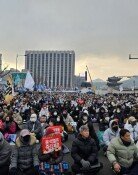Consumer Confidence Plunges
A sluggish rate of consumption has become apparent as wholesale and retail sales, major indicators for gauging consumption, fell after four straight months of growth.
Moreover, worries that stagnation in domestic demand will continue have been worsened by signs of waning construction markets, which have buttressed domestic demand despite stagnant consumption.
--Domestic demand in downturn
According to a report published Tuesday by the Korea National Statistical Office (KNSO), industrial output has continued to rise for the last 12 months. However, wholesale and retail sales decreased 2.2 percent from a year ago. It is the first time in four months since this January (-2.5 percent) when wholesale and retail sales fell from a prior year in the same month.
Wholesale and retail sales shrank for the past 11 consecutive months since last March (-1.9 percent) from a year ago, and it began to demonstrate a mild recovery starting from this February (2.4 percent). However, the report has verified that the consumption has dropped again since this May, illustrating sluggish consumer confidence.
Sales of department stores plummeted 9.5 percent, a decline for the past three consecutive months. In addition, productions for durable consumer goods decreased by 11.3 percent from a year ago because of reductions in automobiles (-22.2 percent), refrigerators (-28.8 percent), and air conditioning for households (-35.4 percent), despite a remarkable increase in cellular phones (36.3 percent).
Construction markets are beginning to show signs of decline. Construction orders dramatically fell 24 percent, the steepest decline in the past 14 months, since March 2003 (30.4 percent). Completed construction projects, which gauge the condition of the current construction market, rose by 9.4 percent, but the growth rate has decreased.
--Information and communication optical illusion
Industrial production jumped 13.5 percent in May from a year ago, marking double-digit growth for the past four months. However, the increase falls to only 3.5 percent when excluding strong outputs in semiconductors (67.9 percent) and radio, television and communication equipments (34.2 percent). Polarization in production among industries has been apparent in the decline of textiles (-10.5 percent) and office and accounting machinery (-9.6).
Additionally, a polarization between domestic demand and exports is apparent, in that the producers shipments index for the domestic demands rose 1.3 percent while that for the exports rose 28.7 percent, the difference attributed to semiconductors, radio, television and communication equipment, and automobiles.
--Investments increase
Investments in facilities rose 1.3 percent in May from a year ago due to an expansion in machinery and telecommunication investments. Investments for this May and April decreased by 7.7 percent and 1.6 percent from a year ago, respectively.
However, the KNSO explained that the increased investments in May can be interpreted as a technical rebound resulting from sluggish investments from a year ago. Therefore, it is premature to conclude that investments have been recovered.
A chief researcher at Samsung Economic Research Institute commented, Credit delinquents and sluggish consumption have delayed a recovery in domestic demand. Therefore, it is most important to revive the domestic demands through active investment.
Jong sik Kong kong@donga.com
Headline News
- Joint investigation headquarters asks Yoon to appear at the investigation office
- KDIC colonel: Cable ties and hoods to control NEC staff were prepared
- Results of real estate development diverged by accessibility to Gangnam
- New budget proposal reflecting Trump’s demand rejected
- Son Heung-min scores winning corner kick







